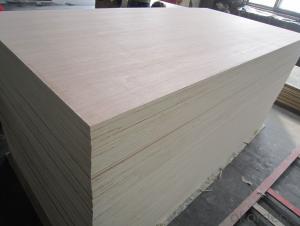Plywood for Roof: The Essential Material for Roofing Projects
When you think about building or renovating a home, the roof is one of the most important components to consider. It’s not just about aesthetics; it’s about durability, functionality, and protection. One material that has proven its worth in the roofing industry is plywood. In this article, we’ll explore why plywood is an essential material for roofing projects, its benefits, and how it can enhance the overall structure of your home.
The Versatility of Plywood
Plywood is a type of engineered wood that is made from thin layers of wood veneer. These layers are glued together with grains running in opposite directions, providing strength and stability. This versatility makes plywood a popular choice for various applications, including roofing. Whether you’re working on a flat, pitched, or curved roof, plywood can be adapted to fit the design and requirements of your project.
Durability and Weather Resistance
One of the main reasons why plywood is favored for roofing is its durability. Plywood can withstand harsh weather conditions such as heavy rain, strong winds, and even snow loads. The layers of veneer and the adhesive used in its construction create a strong bond that resists warping and cracking. This ensures that your roof remains sturdy and reliable for years to come.
Easy to Install and Work With
Plywood is relatively easy to install compared to other roofing materials. It can be cut, drilled, and fastened with ease, making it a favorite among contractors and DIY enthusiasts. The ease of installation not only saves time but also reduces labor costs, which is a significant advantage for any roofing project.
Aesthetic Appeal
While functionality is crucial, the appearance of your roof is also important. Plywood offers a clean, modern look that can complement any architectural style. It can be painted, stained, or left natural to achieve the desired aesthetic. This flexibility allows homeowners to personalize their homes and achieve a unique look that reflects their taste and style.
Cost-Effectiveness
Plywood is an affordable option for roofing, especially when compared to materials like metal or slate. The cost savings can be substantial, making it an attractive choice for homeowners on a budget. Additionally, the low maintenance requirements of plywood mean that you won’t have to worry about high upkeep costs in the long run.
Environmentally Friendly
Plywood is an environmentally friendly choice for roofing. It is made from sustainable wood sources and can be recycled at the end of its life cycle. This eco-friendliness appeals to homeowners who are conscious about their carbon footprint and want to make sustainable choices for their homes.
Fire Resistance
Plywood has fire-resistant properties, which is an essential consideration for any home. The layers of veneer and the adhesive used in its construction create a barrier that can slow down the spread of fire. This feature adds an extra layer of safety to your home, giving you peace of mind.
Sound Insulation
Roofs made with plywood can provide excellent sound insulation. The layers of wood veneer absorb sound, reducing noise pollution from outside sources. This is particularly beneficial for homes located near busy streets or in noisy neighborhoods.
The Right Plywood for Your Roof
When choosing plywood for your roofing project, it’s essential to consider the type of plywood that is best suited for your needs. There are different types of plywood, such as exterior-grade plywood, marine-grade plywood, and structural plywood, each with its own set of properties and ideal applications.
Exterior-Grade Plywood
Exterior-grade plywood is specifically designed for outdoor use and is the most common type used for roofing. It has a higher moisture resistance compared to other types, making it suitable for areas with high humidity or frequent rainfall.
Marine-Grade Plywood
Marine-grade plywood is another option for roofing, especially in coastal areas. It has a higher resistance to moisture and saltwater, making it ideal for homes near the sea. However, it is more expensive than exterior-grade plywood.
Structural Plywood
Structural plywood is designed for heavy loads and is often used in commercial and industrial applications. While it may not be necessary for residential roofing, it is an option to consider if your project requires a high load-bearing capacity.
Installation Tips for Plywood Roofing
Proper installation is crucial for the longevity and performance of your plywood roof. Here are some tips to ensure a successful installation:
1. Inspect the Plywood: Before installation, inspect the plywood sheets for any defects, such as delamination or warping.
2. Use the Right Fasteners: Use galvanized or stainless steel fasteners to prevent corrosion and ensure a secure bond.
3. Proper Sheathing: Sheathing is essential for providing a solid base for the roofing material. Ensure that the sheathing is level and secure before laying down the plywood.
4. Ventilation: Proper ventilation is crucial for preventing moisture buildup and extending the life of your roof. Incorporate ventilation systems into your roofing design.
5. Sealant Application: Apply sealants to all joints and seams to prevent leaks and ensure a watertight roof.
6. Regular Maintenance: Regular inspections and maintenance can help identify and address potential issues before they become significant problems.
Conclusion
Plywood is a versatile, durable, and cost-effective material that can enhance the structure and appearance of your home’s roof. Its weather resistance, ease of installation, and eco-friendly nature make it an excellent choice for homeowners looking to invest in a long-lasting roofing solution. By understanding the different types of plywood and following proper installation practices, you can ensure that your plywood roof will stand the test of time and provide your home with the protection it needs.

